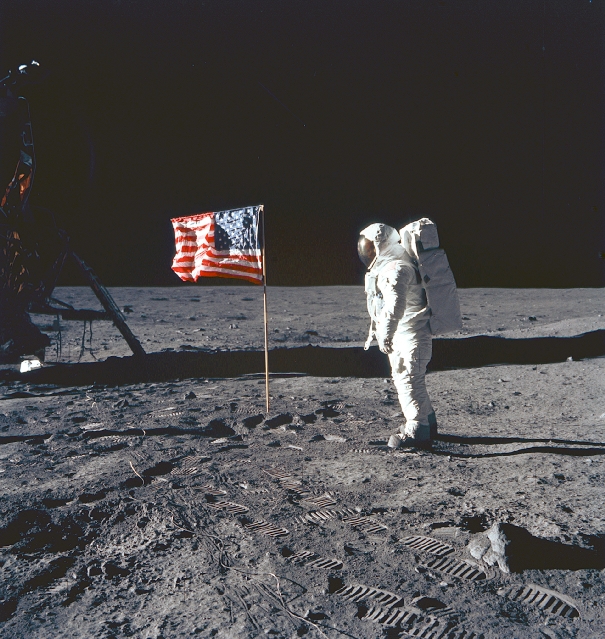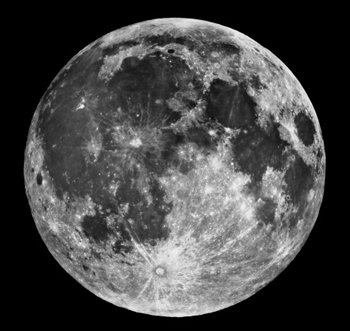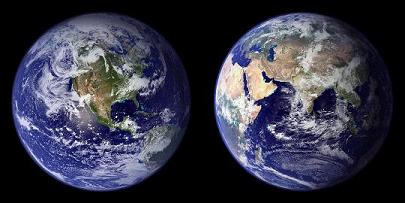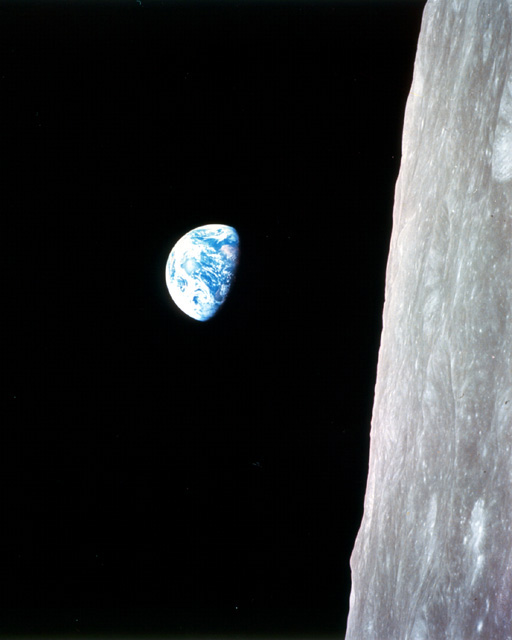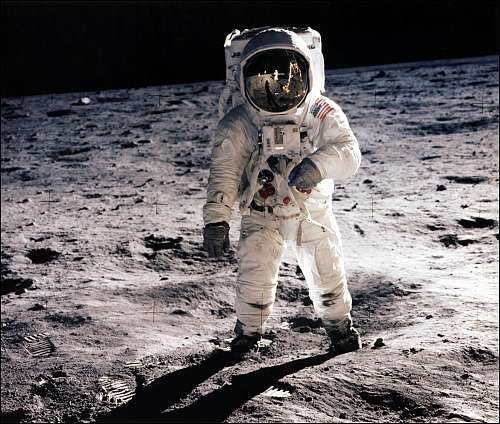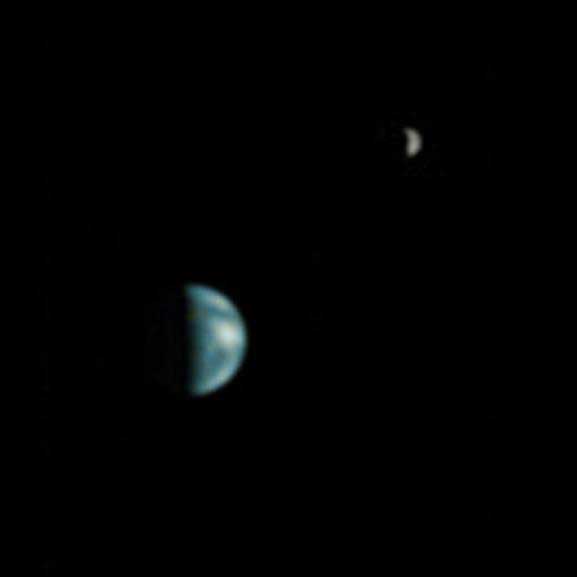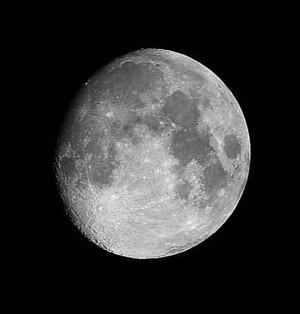[/caption]
The 1st man on the moon was the Apollo 11 Commander Neil Armstrong, who made history on July 20, 1969.
The Apollo 11 mission consisted of Command Module Pilot Michael Collins, Lunar Module Pilot Buzz Aldrin and Commander Neil Armstrong. The mission launched atop a Saturn V rocket on July 16, 1969. After a 4 day journey from the Earth to the Moon, the lunar module detached from the command module and landed on the surface of the Moon in the southern Sea of Tranquility.
The crew remained inside the module for 6 and a half hours, preparing to make their exit onto the lunar surface. And then Neil Armstrong descended the ladder from the lunar module and onto the lunar surface. The first words spoken by the first man on the Moon were, “that’s one small step for (a) man, one giant leap for mankind.”
Buzz Aldrin followed Armstrong, and the two remained on the surface of the Moon for 2.5 hours, taking photographs, collecting rocks, drilling samples, and placing scientific experiments. They they gathered up all their samples, stowed them in the lunar module, and left some souvenirs on the surface of the Moon, like an American flag, Apollo 1 mission patch, and commemorative plaque. They launched again and returned to Earth on July 24.
After the 1st man on the Moon, Neil Armstrong, there were a total of 12 astronauts to walk on the surface of the Moon.
Want to experience what it might have been like to be the first man on the Moon? Here’s a movie review of Fly Me to the Moon.
Of course, NASA has a tremendous amount of information about Apollo 11. Here’s the NASA history page about Apollo 11. And here’s a page that was put together for the 30th anniversary of the first man on the Moon.
You can listen to a very interesting podcast about the formation of the Moon from Astronomy Cast, Episode 17: Where Did the Moon Come From?

